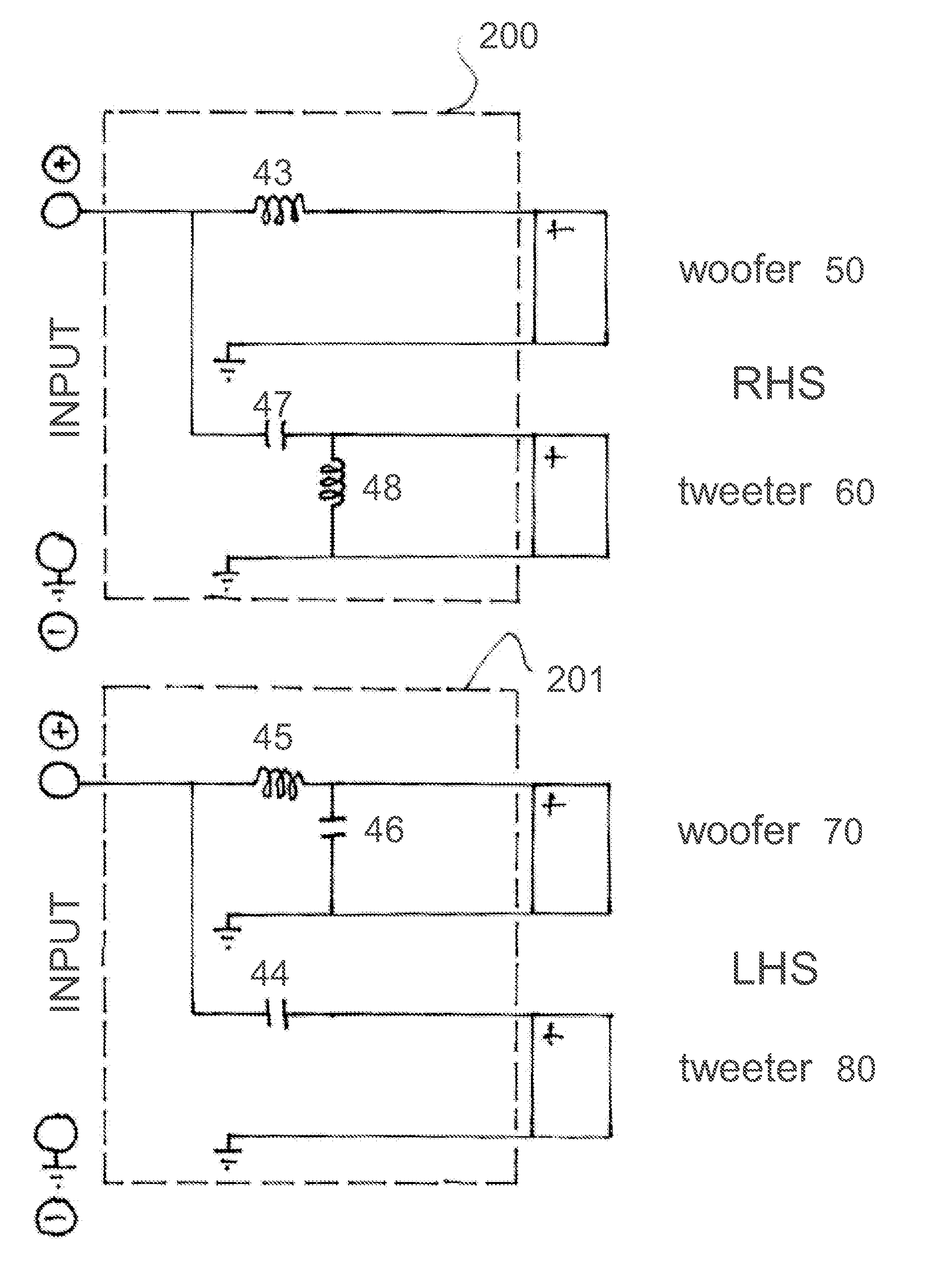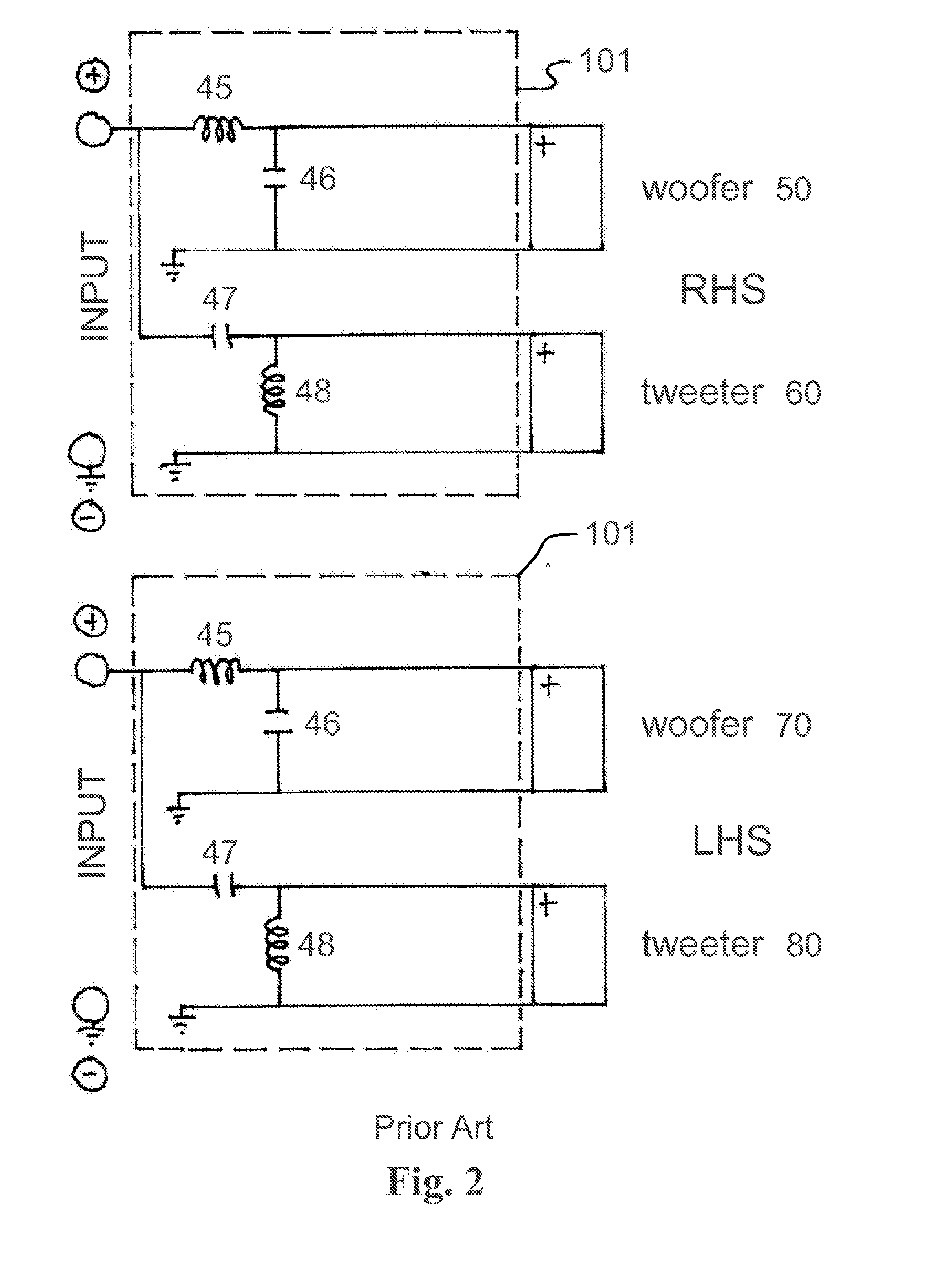Phase-Unified Loudspeakers: Parallel Crossovers
a phase-unified, loudspeaker technology, applied in the direction of stereophonic arrangments, stereophonic circuit arrangements, electrical devices, etc., can solve the problems of lobing and possible interference between channels, and achieve the effect of improving reproduction considerably
- Summary
- Abstract
- Description
- Claims
- Application Information
AI Technical Summary
Benefits of technology
Problems solved by technology
Method used
Image
Examples
Embodiment Construction
[0082]Complimentary crossover networks are therefore used in the RHS and LHS loudspeakers to phase-unify their reproduction. A symmetric effective crossover for the loudspeaker in one channel and an asymmetric effective crossover of typically the same order for the loudspeaker in the other channel comprise said complimentary crossover networks, phase-unifying reproduction in accordance with handedness rules that are hereafter described. Ordinarily an effective crossover can be third order or of a higher order, which is theoretically unlimited, simply depending upon the number of crossover elements used.
[0083]Phase-unified loudspeakers with parallel crossovers, which will henceforth be abbreviated to “parallel phase-unified loudspeakers,” include, but are not restricted to stereophonic, home theater and quadraphonic loudspeaker systems. It is assumed that the same drivers are used in both loudspeakers comprising a stereo system of parallel phase-unified loudspeakers, a definition ext...
PUM
 Login to View More
Login to View More Abstract
Description
Claims
Application Information
 Login to View More
Login to View More - R&D
- Intellectual Property
- Life Sciences
- Materials
- Tech Scout
- Unparalleled Data Quality
- Higher Quality Content
- 60% Fewer Hallucinations
Browse by: Latest US Patents, China's latest patents, Technical Efficacy Thesaurus, Application Domain, Technology Topic, Popular Technical Reports.
© 2025 PatSnap. All rights reserved.Legal|Privacy policy|Modern Slavery Act Transparency Statement|Sitemap|About US| Contact US: help@patsnap.com



